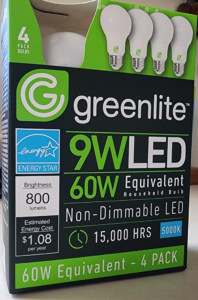How to Choose the Right Light Bulb

You’re right in the middle of a task when the light bulb directly overhead burns out. You quickly head over to your local hardware or lighting store, head towards the bulb aisle, and suddenly come to a dead stop.
There are boxes of bulbs stacked higher than your head! Plus every brand seems to print helpful information in a different location on their packaging.
Even though you brought the old light bulb with you, finding a match seems impossible. You feel lost and overwhelmed.
If this sounds familiar, you aren’t alone. Choosing the right light bulb is a struggle for people just like you across the country. But don’t worry. Today, we’ll talk through the three foolproof steps to find the perfect light bulb every single time.
Three Steps to Choosing the Perfect Light Bulb
Whether you’re replacing a burnt-out bulb or installing a fixture for the first time, you can use these same three steps to make shopping easy.

1. Determine if the bulb will fit.
Using your old light bulb, the box it came from, or the fixture’s directions, determine the base size and bulb shape.
The most common across the US is an “E26” base, meaning an Edison Screw base that’s 26mm in diameter (Pictured left). You’ll also see G for Globe, and C for Candle. So long as your bulb shape and base size match, the bulb will fit.
2. Decide if you’ll love the light.
Next, you must decide if you’ll love the brightness and warmth of these bulbs. Look for two key pieces of information: lumens and Kelvin.
We used to measure brightness in watts, but lumens are how we measure brightness in modern times. A 60-watt incandescent lightbulb is about as bright as a 500-700 lumen lightbulb. Remember this as you consider how much brightness you want.
Kelvin is color temperature– think warm, neutral, cool, and daylight. The scale runs from 2000 to 6500, with 3000K being neutral white. For warm lighting, pick bulbs lower than 3000K. For crisper, task-related lighting, you’ll want higher than 3000K.

You’ll typically find lumens and Kelvin information on the back of the box.
3. Pick the right bulb for the right application.
Kelvin and lumens are important, but so is the bulb’s design.
Each room in your home has a different purpose and needs appropriate lighting. Don’t use the same basic bulb across your entire home. For example, consider reflector light bulbs in your kitchen and other high-task areas. Reflector bulbs push more light into the areas you need most illuminated.
Feel Enlightened with LED Light Bulbs
Keep in mind incandescent bulbs are officially being phased out nationwide. Soon, LED bulbs will be the only thing you can find on shelves. LED bulbs are dimmable, last over 50 times longer than incandescent, and lower your energy bills too.
Next time you’re feeling “in the dark” about choosing perfect LED light bulbs, use these three tips. You’re guaranteed to “shed some light” on your shopping process!













Leave a Reply
Want to join the discussion?Feel free to contribute!